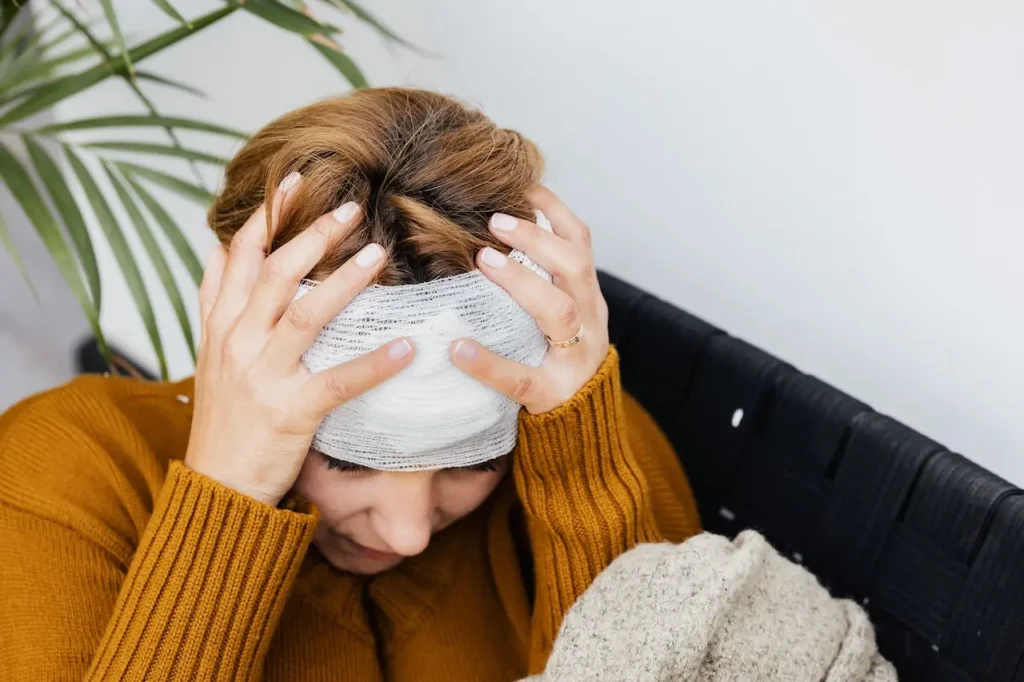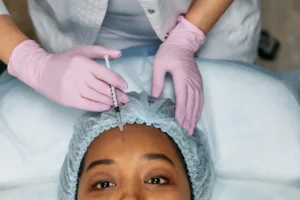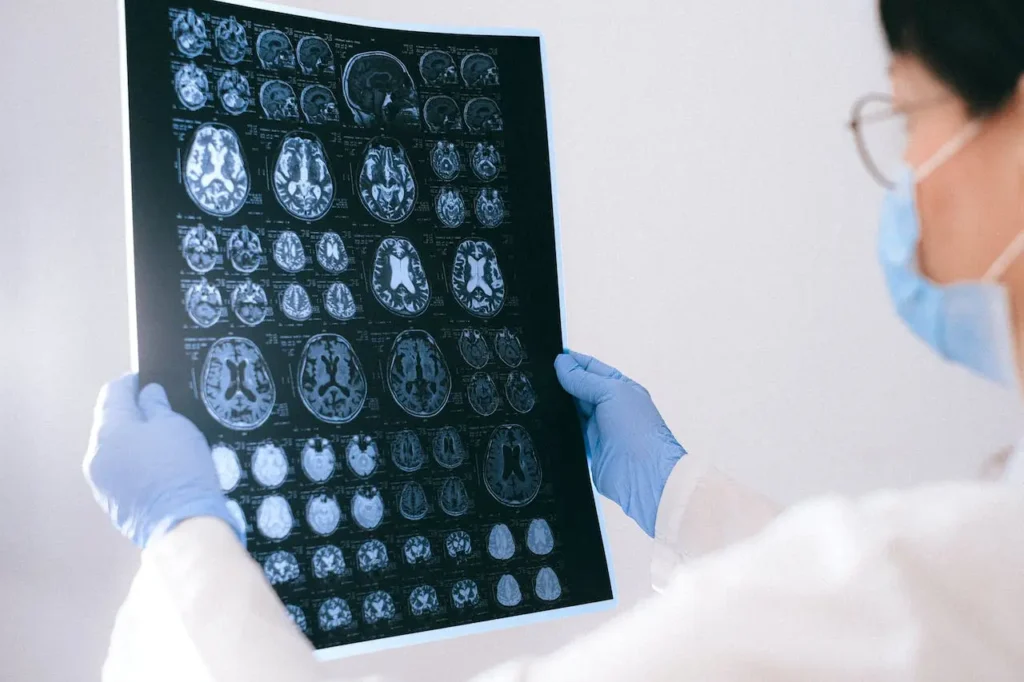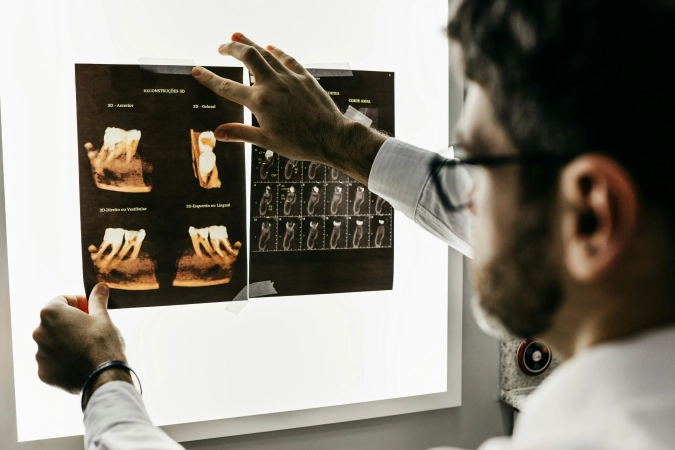Botox for Migraines: 4 Major Injection sites and Side Effects

- Introduction to Botox for Migraines
- Understanding Botox Therapy for Chronic Migraines
- How long do Migraines last?
- Effectiveness of Botox in Migraine Management
- How Does Botox Work for Migraines?
- Botox for Migraines Injection Sites
- Exploring Botox as a Solution for Chronic Headaches
- Botox Treatment for Recurring Migraines
- Botox for Migraines Side Effects
- Top Botox Injection Healthcare Providers
- Caregiver Tips for Individual with Chronic Migraines
- Resources and Support Groups for Individuals with Chronic Migraines
- Conclusion: Maximizing the Benefits of Botox for Migraines
- Frequently Asked Questions (FAQs)
Introduction to Botox for Migraines
This post may contain affiliate links, meaning I may earn a commission if you make a purchase, at no extra cost to you. I only recommend products I trust. Thank you for your support.
Botox is a well-known treatment for reducing the appearance of wrinkles and fine lines, but it also has a lesser-known benefit for chronic migraine sufferers. Chronic migraines can be debilitating, causing intense pain and disrupting daily life.

Botox therapy offers relief for many individuals experiencing these recurrent migraines. By targeting specific injection sites, Botox can effectively manage migraines and provide long-lasting relief.
Understanding Botox Therapy for Chronic Migraines
Botox therapy for chronic migraines involves the injection of botulinum toxin, a neurotoxin produced by the bacterium Clostridium botulinum, into specific muscles in the head and neck.
This toxin works by blocking the release of certain chemicals that transmit pain signals to the brain, thereby reducing the frequency of migraines.
The effects of Botox injections can last for several months, offering long-term relief to migraine sufferers.
- Botox injections are typically administered every 12 weeks.
- The number of injections and dosage may vary depending on the individual’s condition.
- The treatment is usually well-tolerated, with minimal discomfort during the procedure.
The effectiveness of Botox in migraine management has been extensively studied and proven. Clinical trials have shown that Botox treatment can reduce the number of headache days per month, as well as the intensity of the headaches.
In fact, Botox has been approved by the FDA for the treatment of chronic migraines, making it a trusted option for those seeking relief.
How long do Migraines last?
The duration of chronic migraines can differ among individuals. Chronic migraines are characterized by experiencing headaches 15 or more days per month for at least three months, with at least eight of those headaches being migraines. The length of each migraine attack varies, lasting from a few hours to several days.
During a migraine episode, the severity and duration of symptoms can vary. Some individuals may endure migraines lasting only a few hours, while others may experience them over several days.
Various factors, including an individual’s response to treatment, triggers, and overall health, can influence the duration of chronic migraines.
It is crucial for those dealing with chronic migraines to seek guidance from a healthcare professional for an accurate diagnosis and a personalized management plan that suits their specific needs.
Effectiveness of Botox in Migraine Management
Numerous studies have demonstrated the effectiveness of Botox in managing migraines. Patients who receive Botox injections for migraines often experience a significant reduction in the number of headache days per month. Here are some key findings:
- In a clinical trial involving 1,384 patients, those treated with Botox experienced an average of 9 fewer headache days per month.
- Another study showed that Botox reduced the number of migraine attacks by 50% or more in 70% of patients.
- Botox has been found to be more effective than placebo injections in reducing the frequency and severity of migraines.
It is important to note that Botox treatment may not work for everyone, and individual results may vary. However, many migraine sufferers have reported significant improvements in their symptoms after undergoing Botox therapy.
Consulting with a healthcare professional specializing in migraine management can help determine if Botox is a suitable option.
How Does Botox Work for Migraines?
Botox works by blocking the release of certain chemicals called neurotransmitters that transmit pain signals to the brain. By inhibiting the release of these neurotransmitters, Botox prevents the activation of pain pathways in the brain, resulting in a reduction in migraine symptoms.
The precise mechanism of action is still not fully understood, but research suggests that Botox may also have anti-inflammatory effects, further contributing to its effectiveness in migraine management.
Botox injections are strategically placed in various injection sites, depending on the individual’s symptoms and pain areas.
Botox for Migraines Injection Sites
When it comes to Botox for migraines, there are specific injection sites that have proven to be more effective than others. The most commonly used injection sites include the forehead, temples, back of the head, and neck. These areas are targeted because they contain specific muscles and nerve endings that play a role in triggering migraines.
Forehead
The forehead is one of the primary injection sites for Botox for migraines. By injecting Botox into the forehead muscles, known as the frontalis muscles, the tension and strain on these muscles are reduced. This relaxation helps alleviate the frequency and severity of migraines originating from tension in the forehead region.

Temples
Another important injection site for Botox for migraines is the temples. The temporalis muscles, located on the sides of the head, are responsible for the clenching and grinding of teeth, which can trigger migraines. By injecting Botox into the temples, these muscles are relaxed, reducing the occurrence of migraines caused by teeth clenching or grinding.
Back of the Head
The occipital region, located at the back of the head, is another crucial injection site for Botox for migraines. The occipital muscles, when tense, can lead to migraines originating from this area. By injecting Botox into the occipital muscles, their tension is alleviated, providing relief from migraines that stem from the back of the head.
Neck
The neck is also a significant injection site for Botox for migraines. The injection is typically administered at the base of the skull, targeting the suboccipital muscles. These muscles play a role in the development of migraines originating from the neck region. By injecting Botox into the neck muscles, tension and strain are reduced, leading to a decrease in the frequency and intensity of migraines.
Exploring Botox as a Solution for Chronic Headaches
Botox is not only effective in managing chronic migraines but also shows promise as a solution for chronic headaches.
Chronic headaches refer to headaches that occur for more than 15 days per month, lasting for several hours or even days.
While migraines are a specific type of headache, many migraine sufferers also experience other types of headaches. Botox injections can provide relief for these additional headache types, including tension headaches and cluster headaches.
- Tension headaches: Botox injections in the forehead, temples, and neck muscles can help relax the muscles and alleviate tension headaches.
- Cluster headaches: Botox injections in the area around the eyes and forehead have shown promise in reducing the frequency and severity of cluster headaches.
Botox injections can alleviate pain and improve overall quality of life. Some key benefits of Botox for headache relief include:
- Mild pain or discomfort at the injection sites
- Temporary muscle weakness in the treated areas
- Headache or neck pain
- Flu-like symptoms
- Bruising or swelling at the injection sites
It is important to consult with a healthcare professional specializing in migraine management to determine if Botox is a suitable option for headache relief.
Botox Treatment for Recurring Migraines
For individuals experiencing recurring migraines, Botox treatment can be a game-changer. By targeting the specific muscles involved in migraine headaches, Botox injections can effectively reduce the frequency and severity of these episodes.
Regular treatment with Botox can provide long-lasting relief and significantly improve the quality of life for those suffering from recurring migraines.
It is important to note that Botox treatment may not completely eliminate migraines for everyone, but it can greatly reduce their impact. By working closely with a healthcare professional and following a personalized treatment plan, individuals can maximize the benefits of Botox for recurring migraines.
Botox for Migraines Side Effects
While Botox treatment for migraines is generally safe and well-tolerated, there are some potential side effects that individuals should be aware of.
These side effects are typically temporary and resolve on their own. Common side effects of Botox for migraines may include:
- Mild pain or discomfort at the injection sites
- Temporary muscle weakness in the treated areas
- Headache or neck pain
- Flu-like symptoms
- Bruising or swelling at the injection sites
It is important to discuss any concerns or questions about potential side effects with a healthcare professional before undergoing Botox treatment.
Top Botox Injection Healthcare Providers
When seeking Botox treatment for migraines, it is crucial to find a reputable healthcare provider who specializes in migraine management.
- Services: Specializes in comprehensive migraine management services and other headache disorders.
- Location: Houston, Dallas and Las Vegas.
- Services: Specializes in the treatment of migraines and chronic headaches, with a team of experienced neurologists.
- Location: Houston and New Jersey.
- Services: Comprehensive approach to chronic migraines and headache management, including Botox treatment.
- Location: Los Angeles, CA
- Services: Offers Botox injections as part of a personalized treatment plan for migraines.
- Location: Chicago, IL
- Services: Provides Botox injections for migraine management and prevention.
- Location: Los Angeles, CA
- Services: Team certified in Botox injections for migraines, occipital nerve blocks, trigger point injections and much more
- Location: Seattle, WA
Caregiver Tips for Individual with Chronic Migraines
If you are a caregiver for someone with chronic migraines, it is essential to understand their needs and provide appropriate support. Here are some tips to help you navigate this role effectively:
- Educate yourself: Take the time to learn about chronic migraines, their triggers, and potential treatment options. This knowledge will allow you to better understand what the individual is going through and provide informed support.
- Create a calm environment: Migraines are often triggered or exacerbated by bright lights, loud noises, and strong odors. Create a calm and quiet environment for the individual, minimizing these triggers as much as possible.
- Encourage self-care: Help the individual develop self-care routines that can alleviate migraine symptoms. This may include activities such as practicing relaxation techniques, keeping a headache diary, or engaging in regular exercise.
- Offer assistance during attacks: During a migraine attack, individuals may experience extreme pain and discomfort. Be understanding and offer assistance with tasks that may be difficult for them to handle alone.
- Be patient and supportive: Migraines can be a chronic condition that affects the person’s daily life. Offer your support, patience, and understanding as they navigate through the challenges of managing their migraines.
Resources and Support Groups for Individuals with Chronic Migraines
Finding the right resources and support is crucial for individuals living with chronic migraines. Here are five organizations that provide valuable information and assistance:
- Migraine Trust: The Migraine Trust is a UK-based charity dedicated to supporting individuals affected by migraines. Their website offers comprehensive resources, including information on treatments, research updates, and support groups.
- American Migraine Foundation: The American Migraine Foundation provides educational resources, research updates, and access to healthcare providers specializing in migraine treatment. They also offer a community forum for individuals to connect and share their experiences.
- Migraine Again: Migraine Again is an online platform that offers articles, videos, and podcasts on various aspects of migraine management. They cover topics such as treatment options, lifestyle changes, and personal stories of individuals living with migraines.
- National Headache Foundation: The National Headache Foundation provides resources for individuals with migraines, including educational materials, support groups, and access to headache specialists. They also conduct research to advance the understanding and treatment of migraines.
Conclusion: Maximizing the Benefits of Botox for Migraines
Botox therapy for migraines offers a promising solution for individuals suffering from chronic migraines and headaches. By targeting specific injection sites, Botox can effectively manage migraines, provide relief, and improve overall quality of life.
It is essential to consult with a healthcare professional specializing in migraine management to determine if Botox is a suitable treatment option.
Learn more about: respite care for caregivers, comfort care or palliative care, caring for patient with alzheimer and dementia, top mental health care facilities in your area, and Intracranial Pressure (ICP).
Are you searching for a compassionate caregiver with experience in caring for diabetic patients, feel free to contact me here or you find a live in caregiver in your area.
Frequently Asked Questions (FAQs)
How long do migraines typically last?
Migraines can last anywhere from a few hours to several days, depending on the individual and the severity of the migraine.
What are the side effects of Botox for migraines?
Common side effects of Botox for migraines may include mild pain or discomfort at the injection sites, temporary muscle weakness, headache or neck pain, flu-like symptoms, and bruising or swelling at the injection sites.
How does Botox work for migraines?
Botox works by blocking the release of certain chemicals called neurotransmitters that transmit pain signals to the brain. By targeting specific muscles in the head and neck area, Botox inhibits the release of these neurotransmitters, effectively reducing the frequency and intensity of migraines.
Can Botox be used as a preventive measure for migraines?
Yes, Botox can be used as a preventive measure for migraines. When administered regularly, Botox injections can help reduce the frequency and severity of migraines.
Is Botox a permanent solution for migraines?
Botox treatment for migraines provides long-lasting relief, but it may not completely eliminate migraines for everyone. Regular follow-up treatments are necessary to maintain the benefits.
If you or someone you know suffers from chronic migraines, consult with a healthcare professional to discuss your specific situation and determine the best course of action and find out if botox is the right solution for you. Take the first step towards a migraine-free life.




